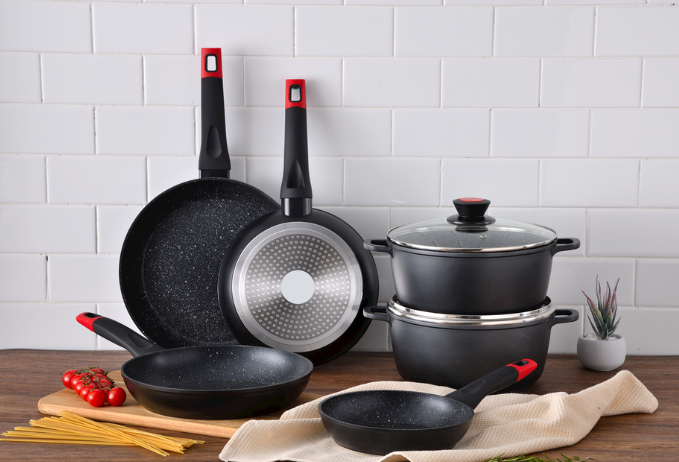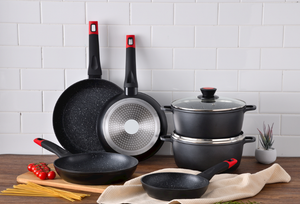
Cookware Inspection Guide - Inspection, Factory Audit and Certification Services
As essential kitchen utensils, the quality and safety of cooking pots directly affect the cooking experience and usage safety. To ensure that cooking pot products meet industry standards and quality certification requirements, establishing a professional inspection process is of utmost importance. This article will systematically introduce the inspection standards, testing methods, and certification requirements for shallow pots and other cooking pots, providing enterprises with a complete quality control guideline.
I. Product Definition and Certification Scope
Definition of Deep Fryer
During edge measurement, a product is defined as a deep fryer if its internal depth is equal to or less than the inner diameter. Such products must undergo inspection and certification in accordance with specific standards.
II. Key Points of Basic Inspection and Certification
The inspection and certification process should cover four core dimensions:
Packaging inspection - Meets transportation and sales requirements
Content verification - All accessories are present and the information is accurate.
Appearance inspection - Surface treatment meets quality standards
Structural assessment - Meeting safety and functionality requirements
III. Structural Safety Certification Standards
3.1 Stability Certification
When placing an uncovered pot in the most unfavorable position on a 5-degree inclined plane, it should remain stable.
The design feature excludes the cases where this requirement applies.
3.2 Handle Configuration Certification
Cookware with a capacity exceeding 3.75 liters or a total weight of more than 5 kilograms after being filled with water (except for shallow pots) must be equipped with two-hand handles.
Ensure proper balance and safe operation
3.3 Hygiene and Cleaning Certification
All surfaces that come into direct contact with food must be easy to clean.
There are no hidden areas of poor hygiene, and it complies with food contact material standards.
3.4 Handle Position Verification
Regular cookware: The handle position is above the center of gravity when the pot is filled with water.
Shallow pot standard: The distance between the handle and the horizontal projection surface of the pot bottom is ≥ 30mm
Bilateral pot: The lowest grip point of the handle when it is in normal use
3.5 Safety Protection Certification
The handle will not come into contact with hot surfaces during use.
Metal handle cooking utensils must be affixed with warning labels: "Caution: handle and knobs may become very hot. The use of an oven glove is recommended. Please refer to instructions for details. Please remove this label before use."
The largest pot in the set of cookware must be equipped with a warning label.
3.6 Capacity Identification Certification
The claimed capacity must be ≤ the actual capacity
Establish an accurate capacity measurement and verification system
3.7 Diameter Accuracy Certification
Bottom diameter tolerance: The deviation between the claimed value and the measured average value is ≤ ±10mm
Other diameter tolerances: The deviation between the claimed value and the measured average value is ≤ ±5mm
3.8 Flatness of the bottom of the pot
When viewed from below, there should be no protrusions on the bottom of the pot.
Excluding design characteristics requirements
IV. Special Testing and Certification Projects
4.1 Handle Fixation Device Bending Strength Test
Test Standard: Apply a bending force of 100N
Fixing method: The cooking utensils are securely fixed onto a rigid surface.
Point of application of force:
Single-handle / Long-handle pot: 10 ± 1 mm from the end of the handle
Double-handle pot: Apply force simultaneously at the ends of both handles
Certification requirements: The fixed device must be intact without any failure and must not compromise safety.
4.2 Scratch Test for Coating Adhesion
Preparation: Soak in boiling water for 15 minutes, then cool and dry.
Grid specification: 1mm spacing, 100 squares, straight and perpendicular lines reaching the bottom.
Test method: Use SCOTCH #898 adhesive tape for two times of sticking and pulling.
Certification standard: No peeling of the coating occurs.
4.3 Safety Certification for Lid Assembly
The lid should be able to rotate freely.
At a 45-degree angle, the pot lid should not fall off.
Ensure the sealing and safety during the usage process.
4.4 Bottom Flatness Certification
Deflection standard: 0.4% of the bottom diameter (for example, if the bottom diameter is 250mm, the deflection should be ≤ 1mm)
Measurement method:
Special measuring tools or
Use a steel ruler and a feeler gauge to measure the maximum gap.
4.5 Electromagnetic Compatibility Certification (Applicable only to Electric Kettles)
The magnet test must have a magnetic response.
Ensure the suitability of the induction cooker
4.6 Dimension Accuracy Certification
The inner height measurement value is consistent with the customer's data/sample.
General allowable deviation: ±2mm
V. Product Information and Documentation Verification
5.1 Sales Information Verification
The model, material, and product size identification are accurate.
The type of heat source is clearly indicated.
The information of the manufacturer, importer or retailer is complete.
5.2 Certification of Use and Maintenance Guidelines
The following core contents must be included:
Preparations before the first use
Cleaning Specifications after Use
Handle and Grip Maintenance Instructions
Energy Efficiency Optimization User Guide
Safety Warning for Hot Components
Maintenance of non-stick coating (if applicable)
Deep-frying Safety Guide and Water Level Limitations
Stainless steel pot body with aluminum bottom - safe dry-frying warning
Quality Complaint Handling Procedure
Manufacturer contact information
VI. Inspection and Certification Process Standards
1. Sampling Inspection Plan
Implement statistical sampling in accordance with the AQL standard
Strict inspections will be carried out for safety-critical projects.
Establish a complete quality traceability record
2. Test Environment Requirements
Standardized testing laboratory environment
Use calibrated and qualified testing equipment
Strictly implement the standard operating procedures
3. Defect Level Determination
Serious Defect: Projects that affect safety are strictly prohibited.
Main defect: Quality issue that lowers the product grade
Minor defect: Minor appearance blemish
VII. Key Control Matters for Factory Inspection Certification
To ensure that the quality of the cookware products continuously meets the certification requirements, during the factory inspection process, the following matters need to be given special attention:
Raw material control: Establish a food-grade material certification system
Production process control: Establishing specifications for key processes such as stamping, welding, and coating.
Calibration of testing equipment: Regularly calibrate all measuring instruments
Personnel qualification certification: Professional training for operators and inspectors
Document management system: Improve quality records and traceability documents
Inspection and Certification Summary
The inspection and factory verification of cookware products is a systematic project that requires comprehensive testing and certification covering structural safety, material hygiene, and usage performance. By establishing a professional inspection process and strict quality standards, enterprises can ensure that their products meet the requirements of food contact material certification, providing consumers with safe, durable, and efficient kitchen cookware.
Share this product

Cookware Inspection Guide - Inspection, Factory Audit and Certificatio
As essential kitchen utensils, the quality and safety of cooking pots directly affect the cooking experience and usage safety.
